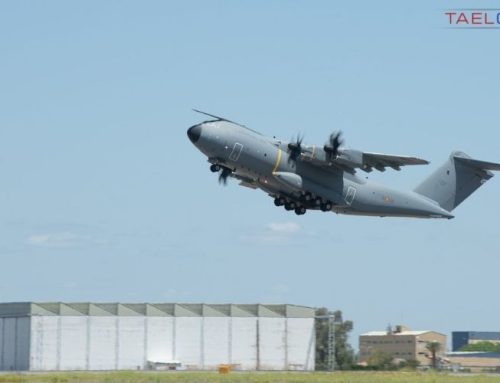Everything you need to know about Aircraft Structural Analysis!
Aircraft structural analysis is a fundamental aspect of aviation engineering, and it is a vital factor in ensuring the safety and reliability of aircraft. It involves the study of the structural components of an aircraft, and how they react to various loads and stresses. In this article, we’ll discuss everything you need to know about aircraft structural analysis.
What is Aircraft Structural Analysis?
Aircraft structural analysis is the discipline that deals with the study of the forces and stresses acting on aircraft and how they affect the structural components of an aircraft. The goal of aircraft structural analysis is to ensure that the aircraft’s airframe, including wings, fuselage, and tail, can withstand the loads and stresses imposed on them during operation.
Why is Structural Analysis Important for Aircrafts?
Aircrafts are subjected to various loads and stresses during their operation, such as the weight of the aircraft, aerodynamic forces, wind gusts, and engine thrust. These loads, if not adequately anticipated, can lead to structural failures that can be catastrophic. Structural analysis is, therefore, essential in predicting the response of structural components of an aircraft to loads and stresses, and it helps in designing aircraft structures that can withstand these forces.
How is Aircraft Structral Analysis Conducted?
Aircraft structural analysis is conducted using various tools and methods, including analytical methods and computer-aided techniques. The primary analytical methods used in aircraft structural analysis include equilibrium and compatibility equations, static and dynamic analysis, and finite element analysis. Finite Element Analysis (FEA) is a popular method used in aircraft structural analysis. FEA is a computer-aided technique that models an aircraft or aircraft component as a collection of small, interconnected elements. These elements have properties, such as stiffness and strength, that are determined through testing or analysis. FEA software then applies loads and boundary conditions to these elements and computes the resulting stresses and displacements. The use of computer-aided techniques in structural analysis has significantly enhanced the accuracy and speed of the analysis compared to analytical methods.
Key Factors Analyzed During Structural Analysis
Aircraft structural analysis involves analyzing various factors that impact the structural integrity and performance of an aircraft. These include:
- Loads and Stresses: Loads and stresses are the primary factors that must be analyzed in aircraft structural analysis. Examples of these include aerodynamic forces, landing impact loads, and engine thrust.
- Material Properties: The properties of the materials used to make the aircraft are essential factors in structural analysis. These include strength, weight, and stiffness.
- Structural Geometry: The geometry of an aircraft’s structure is crucial in determining its structural integrity. The shape and size of an aircraft’s structural components play a significant role in its ability to withstand forces and stresses.
- Maintenance and Repair: Maintenance and repair schedules are critical factors in ensuring that an aircraft remains structurally sound throughout its service life.
Here’s a detailed breakdown of the key factors analyzed during structural analysis:
Loads
Loads are the forces that act on a structure, including gravity, wind, and seismic forces. Structural engineers must consider the magnitude, direction, and distribution of these loads to ensure that the structure can support them without failure.
Loads are one of the primary factors analyzed during aircraft structural analysis. They refer to the external forces that act on the aircraft, which include aerodynamic loads, landing impact loads, and engine thrust.
Aerodynamic loads are the most significant and complex loads in aircraft structural analysis. They are produced by the interaction between the aircraft and the surrounding air. These loads include lift, drag, and side forces. The magnitude and direction of these loads continuously change during flight, and they are affected by several factors such as airspeed, altitude, and weather conditions.
Another critical load is the landing impact load, which is the force experienced by the aircraft during landing. The magnitude of this load depends on several factors such as the landing speed and the weight of the aircraft. To ensure the structural integrity of the landing gear and other structural components, aircraft designers must analyze this load during aircraft structural analysis.
Engine thrust is another significant load in aircraft structural analysis. It is the force generated by the aircraft’s engines, and it affects the aircraft’s stability and performance. Designers must analyze the engine thrust load to ensure that the airframe can withstand the forces generated by the engines during operation.
In addition to the above loads, there are also other loads that must be analyzed during aircraft structural analysis. These include static and dynamic loads, thermal loads, and vibration loads. Static loads are loads that remain constant in magnitude and direction, while dynamic loads are those that change in magnitude and direction over time. Thermal loads are loads caused by temperature changes, which can cause structural components to expand or contract. Vibration loads are loads caused by mechanical vibrations that can cause fatigue and stress on aircraft components. In conclusion, loads are a crucial factor in aircraft structural analysis. Analyzing the external forces experienced by an aircraft and ensuring that the airframe can withstand them is essential in designing safe and reliable aircraft. With modern analytical methods and computer-aided techniques, designers can accurately predict the effects of loads on aircraft structures and minimize the risk of catastrophic events.
Of the key factors analyzed during structural analysis, loads and stresses are among the most critical. They are the forces that act upon a structure, and their magnitude, direction, and distribution determine the structural response. Here are some more details about loads and stresses in structural analysis:
Loads acting on a structure can come from various sources, such as gravitational forces, wind, seismic activity, and live loads (people and vehicles). The magnitude and distribution of the loads can vary depending on the location, function, and design of the structure. For instance, a bridge must be designed to withstand the weight of the vehicles crossing it, as well as any wind and seismic loads that may be present.
Stresses:
Once the loads acting on a structure have been identified, structural engineers analyze the stresses that result from these loads. Stresses are internal forces that act on the materials that make up the structure, and they can induce strain, deformation, or failure if not accounted for in the design.
Type of Stresses:
There are six types of stresses that structural engineers typically analyze:
- Tensile Stress: Tensile stress occurs when materials are pulled apart, and the load is perpendicular to the cross-sectional area of the material. For example, the cables used in suspension bridges are under tensile stress.
- Compressive Stress: Compressive stress occurs when a load is applied to a material, and it is compressed or shortened. Columns and beams are under compressive stress.
- Shear Stress: Shear stress occurs when a force is applied parallel to the cross-sectional area of a material, such as when two plates slide past each other. Shear stress is found in structures such as beams, girders, and trusses.
- Torsional Stress: Torsional stress is found in structures that are subject to torsion or twisting, such as shafts and propellers.
- Flexural Stress: Flexural stress occurs when materials are bent, such as when a beam or floor joist bears weight along its length.
- Thermal Stress: Thermal stress occurs due to changes in temperature that can cause materials to expand or contract. Structural engineers must account for thermal stress when designing structures that will be subject to temperature changes.
Structural engineers use mathematical equations and computer simulations to analyze the stresses in structures subjected to various loads. The goal is to design structures that can withstand the loads and stresses they will encounter during their expected lifetime, while minimizing weight and cost. Overall, the proper analysis and design of structures with consideration given to the loads and stresses that will be encountered are critical to their performance, safety, and longevity.
Material Properties
Structural engineers use mathematical equations and computer simulations to analyze the stresses in structures subjected to various loads. The goal is to design structures that can withstand the loads and stresses they will encounter during their expected lifetime, while minimizing weight and cost. Overall, the proper analysis and design of structures with consideration given to the loads and stresses that will be encountered are critical to their performance, safety, and longevity.
Material properties are among the most critical factors analyzed during structural analysis. The properties of the materials used in a structure can significantly impact its performance and durability, making it essential to consider these properties carefully during the design stage. The following are some of the key material properties evaluated during structural analysis:
- Strength: The strength of a material refers to its ability to withstand external loads without breaking or deforming. The strength of a material is determined by conducting mechanical tests such as tensile, compression or bending tests. Structural engineers must select materials that have adequate strength to handle anticipated loads without exceeding their yield strengths.
- Elasticity: A material’s elasticity describes its ability to return to its original shape after being subjected to a load. During the design process, engineers must ensure that the elastic limit of the material is not exceeded, or else the materials will not return to their original position.
- Ductility: Ductility refers to a material’s ability to deform without breaking when subjected to stress. Materials with high ductility are more resistant to cracking/fracture and can absorb more energy without failure.
- Stiffness: Stiffness is a material property that defines its resistance to bending or deflection under an applied force. A material’s stiffness may be evaluated by its modulus of elasticity; materials with high modulus of elasticity are stiffer than those with lower modulus of elasticity.
- Fatigue Resistance: A structure is subjected to repeated cyclical loads during its service-life. Materials that can resist fatigue are essential to extending the life of a structure. Fatigue resistance is often evaluated through fatigue testing which involves the application of repeated loads for millions of cycles to determine how long a material will withstand them before failure.
Analyzing the material properties of the component of the structure provides designers with the necessary information to choose the right materials and optimize the design to achieve a safe, durable and cost-effective structure. Failure to consider material properties carefully during the design phase may lead to material failure, which can have significant negative impacts both in terms of safety and financial costs. Modem computer-aided design tools and advanced structural analysis techniques make it possible to accurately model and evaluate the performance of materials and identify the optimal combination for target applications.
Geometry
The shape and size of a structure are also important factors in its performance. Structural engineers must analyze the geometry of a structure to determine its level of stability, strength, and stiffness.
Geometry is one of the key factors analyzed during structural analysis. It refers to the size, shape, and arrangement of the components that make up the structure. The geometric properties of the structure play a crucial role in determining its strength, stiffness, and deflection characteristics. Here are some more details about geometry in structural analysis:
- Shape: The shape of the structure can affect its strength and stability. For instance, a triangular truss is generally stronger and more rigid than a square truss of the same size because the triangular arrangement of the members reduces the buckling tendency of the truss. Similarly, the shape of the cross-section of a beam can affect its strength and deflection characteristics. A beam with a wide web and narrow flanges, for example, will have a lower moment of inertia (a measure of its resistance to bending) than a beam with a square cross-section of equal area.
- Size: The size of the structural components is another important geometric factor for structural analysis. Increasing the size of a beam or column can make it stronger and more resistant to buckling, but it can also increase its weight and cost. Meanwhile, reducing the size of the components can save weight and material cost, but it may also reduce their strength and stiffness. Structural engineers must balance these competing factors to arrive at an optimal size for each component.
- Arrangement: The arrangement of the structural components also affects their strength and stiffness. The spacing and alignment of columns, for example, can affect the amount of lateral deflection and sway in a structure under wind or seismic loads. Similarly, the location and orientation of beams and joists can affect their resistance to bending and shear forces.
Overall, the geometry of the structure is an essential consideration in structural analysis. Structural engineers use mathematical models and computer simulations to calculate the stresses, strains, and deflections in various geometric configurations of the structure. By analyzing the geometric factors, structural engineers can determine the optimal size, shape, and arrangement of the components to ensure a safe, reliable, and cost-effective structure.
Boundary Conditions
Boundary conditions are the constraints that limit the movement or behavior of a structure, such as supports or fixed points. Structural engineers must consider the location and type of boundary conditions to ensure that the structure can resist the forces acting on it.
Boundary conditions are essential factors analyzed during structural analysis. They determine how a structure is supported, constrained, and loaded. It is critical to define the boundary conditions correctly to provide accurate analysis results and ensure that the structure is safe and meets the required standards. The following are some of the most common boundary conditions evaluated during structural analysis:
- Supports: A structure’s supports are the points where it is fixed or connected to another structure (like a foundation or another part of a building). Support types include pinned or fixed supports, rollers, and hinges. Each support type exerts a specific push or pull in a particular direction, which must be correctly determined and applied during the structural analysis. Improperly defined supports may lead to underestimation of stresses or deformation.
- Constraints: Constraints are used to restrict the movement of a structure at specific locations or with respect to certain directions. They are used to transmit the load between different components of the structure or reduce or eliminate excessive deflection. Common constraints are rigid restraints, translational and rotational constraints. Constraints must be accurately identified, and their limits should be consistent with the material properties of the structure.
- Loads: Loads are the external forces applied to a structure, such as weight, wind, earthquakes, and other external factors. Accurately calculating these loads and how they will affect a structure is critical to ensure that it is correctly designed to handle them. Loads may include point loads, distributed loads, imposed loads, temperature gradients, and so on.
- Environmental conditions: Environmental conditions can significantly influence the behaviors of the structure. They may include temperature variations, humidity, freeze-thaw cycling, soil conditions, and more. Environmental considerations may become important for some structures, such as bridges, pylons or pipelines.
Structural engineers use advanced analysis techniques and software to model these boundary conditions and determine how they will affect the behavior of a structure. Base on these results, they can modify or optimize the design and make necessary adjustments to ensure the structure meets specific requirements. Proper consideration of these boundary conditions helps to ensure structural safety, durability, and performance. Failure to consider these boundary conditions may lead to the failure of the structure, which can put people’s lives and financial investments at risk.
Structural System
The structural system refers to the way that the elements of a structure are interconnected to form a cohesive whole. Different systems, such as trusses, frames, and shells, have different performance characteristics and are suited to different types of structures.
The structural system refers to the way that the elements of a structure are interconnected to form a cohesive whole. Different systems, such as trusses, frames, and shells, have different performance characteristics and are suited to different types of structures.
- Resistance to loads: The structural system is a critical factor that determines the building’s or structure’s ability to resist loads such as wind, seismic forces or dead loads. The structural system must be designed to resist these loads while maintaining its integrity and remaining within acceptable limits of deflection.
- Uniformity: Uniformity in load distribution, stiffness and resistance throughout the building is very important since non-uniform loads are likely to lead to uneven deflection and potential structural damage. An optimal structural system will distribute the loads uniformly through the building, and the stiffness and strength will be consistent throughout.
- Versatility: Versatility in a structural system refers to its ability to adapt to various types of loads and different configurations. An optimal structural system will be flexible enough to accommodate changes in use or loading by allowing for easy addition or removal of components; this way, the structure can efficiently and safely accommodate future changes.
- Efficiency: Efficiency involves designing the structural system to use the minimum amount of materials without compromising on structural stability, serviceability or reliability. An optimal structural system will leverage the strengths of each component to deliver the required performance from the least amount of materials possible. This approach can result in significant cost savings in both the material and construction costs.
- Aesthetics: The structural system’s visual and architectural appeal plays an important role in building design. Accordingly, the chosen structural system should allow for incorporation of architectural elements and spaces with clear spans
The choice of structural system is crucial in ensuring safe, reliable, and cost-effective structures. For instance, a steel frame is ideal for large commercial and warehouse structures, while a timber frame is suitable for residential structures. Structural analysis can assist with evaluating different structural systems and selecting the one that meets the design requirements with optimal design criteria including cost-effectiveness, aesthetics and adaptability.
Failure Modes
Structural engineers must analyze the potential failure modes of a structure to identify areas of weakness and determine how to avoid them. Common failure modes include buckling, bending, and torsion, and each has unique characteristics that must be considered in the design.
“Failure modes” refer to the ways in which a structure or its components may fail under specific loading conditions. Analyzing these potential failure modes is crucial for designing structures that can withstand a range of loads and environmental conditions. Here are some of the most common failure modes considered during structural analysis:
- Buckling: Buckling is a failure mode that occurs when a slender structural component (such as a column) fails due to compressive loading, leading to a sudden failure rather than gradual deformation. The buckling load is determined based on the column’s geometry, material properties, and boundary conditions.
- Yielding: Yielding is a failure mode that occurs when a material deforms permanently due to excessive stress. It occurs in ductile materials like steel and aluminum when they reach their yield strength, and the material’s ability to withstand loads decreases steadily after that point.
- Fatigue failure: Fatigue failure occurs when a material or structure fails due to repeated or cyclic loading, which causes tiny cracks to form and propagate. Fatigue failure is a significant concern in structures subjected to loads cycling through extreme loads over long periods, such as machines or bridges.
- Shear failure: Shear failure occurs when a structure fails due to excessive shear forces, causing the structural parts to separate along a plane parallel to the direction of the forces. Shear failure occurs when the forces applied to a component exceed its maximum load-bearing capacity against shear forces.
- Overturning: Overturning occurs when a structure fails due to excessive lateral forces, causing it to overturn or topple over.
- Deflection failure: Deflection failure occurs when a structure fails due to excessive deflection or bending, leading to damage or collapse. Deflection failure is a severe problem in structures with significant spans, such as bridges, roofs, or floors.
Structural engineers use mathematical modeling and computer simulations to predict these potential failure modes and how they may occur. Based on these failure modes, they optimize the design to ensure the structure can withstand a range of loads and environmental conditions, prioritizing safety and durability. By analyzing failure modes, engineers can ensure that the structure remains reliable and safe throughout its lifetime.
Codes and Standarts
Structural engineers must follow codes and standards established by regulatory agencies to ensure that structures are built safely and in compliance with legal requirements. These codes and standards cover areas such as materials, design, and construction practices.
Codes and standards are critical factors in structural analysis. They serve as the minimum requirements that must be met to ensure that a structure is safe, reliable, and complies with applicable laws and regulations. Here are more details about codes and standards in structural analysis:
- Safety considerations: The primary objective of codes and standards is to ensure the safety of the occupants of the structure. Safety considerations include the structural integrity of the building, fire resistance, seismic resistance, and wind load resistance. Structural analysis should demonstrate that the proposed design complies with the relevant codes and standards and is adequately supported.
- Serviceability: Codes and standards set minimum criteria for serviceability requirements such as deflection, vibration, sound insulation, and thermal performance to ensure the structure meets the intended service life under operational loads. Structural analysis must indicate that the proposed design meets these requirements.
- Sustainability: Codes and standards increasingly emphasize sustainability considerations. An optimal design should address its sustainability, including its environmental impact, cost, and social factors. It should incorporate sustainability principles such as energy efficiency, durability, reuse and recyclability of materials, and consider the building’s impact on its surroundings.
- Materials and construction specifications: Codes and standards specify requirements for the choice of materials and construction quality. They define how materials should be used and how the constructions should be undertaken. Structural analysis should demonstrate that proposed materials and construction methods comply with the specified codes and standards.
- Legal considerations: Codes and standards also provide legal requirements necessary to practice engineering in a particular area. Building materials and systems may require certification or inspection by regulatory authorities specifically to guarantee compliance with codes and standards. Structural analysis determines if the proposed design meets these requirements.
In summary, Codes and standards form an essential aspect of structural analysis. Compliance with these criteria is critical to ensuring a safe, reliable, sustainable and cost-effective structure. Structural analysis evaluates the proposed design to ensure that it meets minimum requirements set by the applicable codes and standards. This provides assurance that the intended outcomes of the building design will be satisfied.
Environmental Factors
Environmental factors, such as temperature, humidity, and corrosion, can affect the performance of a structure over time. Structural engineers must consider these factors to ensure the long-term durability of the structure.
“Environmental factors” refer to the range of external factors that can impact the structure’s performance or lifecycle, such as natural phenomena, weather, and pollution. Analyzing these factors is critical for designing structures that can withstand a wide range of environmental stresses, perform well over their full lifecycle and ensure long-term sustainability. Here are some of the environmental factors analyzed during structural analysis:
- Wind Load: Wind load is a force that acts on the structure due to wind. Wind load analysis considers the effect of gusts, vortex shedding, and lateral pressure on the structure. Wind load analysis is critical in designing structures meant to resist damage, such as tall buildings or large-span roofs.
- Seismic Load: Seismic load refers to the type of load caused by earthquakes, which creates horizontal and vertical strains on the structure. Seismic analysis considers the structure’s overall dynamic behavior, including its natural frequency, mode distribution, and dynamic response due to the seismic loads. Seismic analysis is critical for designing structures in earthquake-prone areas.
- Temperature Changes and Expansion & Contraction: Temperature changes during the life cycle of a structure can be significant, which can lead to structural expansion, contraction, and deformation. Structural engineers consider thermal gradients and the thermal properties of materials when designing to mitigate the effects of such temperature changes.
- Water Accumulation: Accumulation of water, through sources like rainwater or flooding, can lead to catastrophic failure of a structure. Structural engineers analyze the impact of water accumulation on the structure and design a drainage system to remove the water during and after the rainy season.
- Soil and Foundation: Soil type and foundations are critical in determining a structure’s behavior under loading. Engineers analyze the properties of the soil beneath the foundation and the foundation’s design to ensure that they are strong enough to support the structure and its loads.
- Sustainable Design: Environmental factors extend beyond the impact of natural phenomena. They also increase the importance of sustainable design in building design. Engineers consider the emissions from materials, durability, energy use, and long-term impact on the environment.
In summary, analysis of environmental factors in the structural design process helps account for conditions beyond the control of the building or structure. It helps engineers create designs that can withstand the changing environmental conditions, and ensure long-term reliable and efficient performance.
Conclusion
By analyzing these key factors, structural engineers can design and build structures that are safe, durable, and cost-effective, while meeting the specific requirements of the project. Comprehensive structural analysis is essential to ensuring the integrity and safety of modern structures in a variety of industries, from bridges and skyscrapers to oil and gas platforms and space exploration vehicles.
In this article, we have explained in detail “Everything about Aircraft Structural Analysis!” which is a frequently asked question in the aviation industry. If you are interested in aviation and engineering fields, you can read NASA as a global source and other articles on the TAELCO Blog as a Turkish source.






Leave A Comment